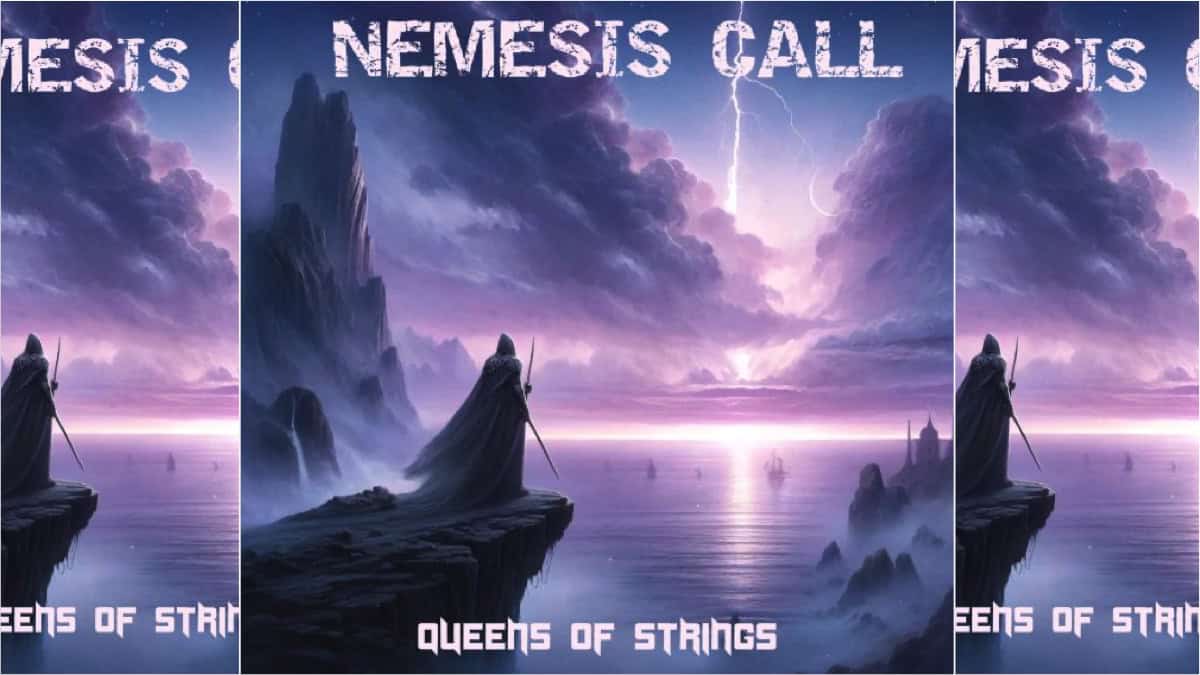Latest
Building a Solid Improvisational Concept Part 3 by Igor Saavedra

 Hi my friends, it’s great to be writing for you on this very first 2012 issue. I hope you had great holidays and that you are prepared to work and to improve on your musicality. I can tell you that I’m already studying new things because I’ve got a lot to learn!
Hi my friends, it’s great to be writing for you on this very first 2012 issue. I hope you had great holidays and that you are prepared to work and to improve on your musicality. I can tell you that I’m already studying new things because I’ve got a lot to learn!
On the previous articles we’ve already covered the Philosophical, “Quantum Physics” and Poetical and Lyrical aspects of improvisation. So on the very last part of this “Trilogy on Improvisation” we’ll be covering the Esthetical and Psychological aspects, which in my opinion will close the circle for the main aspects of improvisation that have nothing to do with topics like scales, technique, chords, licks, chops, etc.
How the Esthetical aspect works on Improvisation
I’d like to introduce you to the subject of Esthetics.
– First of all you have the Esthetical Object, which is the idea of what you want to do or create.
– Then you have the Esthetical Result, which doesn’t necessary belongs to its’ creator, and mainly belongs to the audience.
– So as you can see in Esthetics you have what is called a Double Reality; from the point of view of the creator, the more the Esthetical Result reflects what it was for the Esthetical Object, the more the creator increases his/her sensation of Beauty from his/her creation; this specific sensation can only be achieved by the creator… so that’s great for us as improvising beings, isn’t it?
– Finally…. I suggest never forgetting to consider that “What has been made… has beauty on itself”.
What is beautiful or ugly is obviously something very subjective… and when it comes to music this gets even more critical, but there are indeed some objective aspects in Esthetics that I suggest you should also consider.
If you have studied a little bit about Esthetics I think you’ll agree with me that this concept is closely related with another concept, which is Proportion. The concept of proportion at the same time is closely related with mathematics and with another very important concept, which is Equilibrium, or most commonly said, “Balance”.
Think a little bit about how these concepts relate themselves with the Improvisational context and you’ll end up finding a lot of connections. To make it short I’ll suggest some tips about what to do or not to do when you are improvising so as to be able to walk within the ranges of Proportion and Equilibrium.
– Always consider the length of the solo… don’t exaggerate! How many times have you heard a musical piece that is 3 minutes long and one of the Solos is 20 minutes long! Not everybody is Charlie Parker or Keith Jarret, so those are not good examples to validate extremely long Solos. Exceptions will just confirm the rule. If you cross that fine line you can transform what could have been a beautiful solo into an ugly, heavy, boring and disgusting “self gratification” speech.
– Don’t exaggerate with the length and the amount of chops and licks… Don’t play them in any moment of your Solo just “because.” Know when and how to play them so as to relate them with the climaxes or “sub climaxes” of your Solo; usually those are the right moments for them.
– Same with dynamics… Build dynamics carefully, increase the volume just when needed, don’t play “flat”… people usually play loud all the way… you must leave some room so as to be able to grow on dynamics while the Solo starts to grow on intensity… obviously again there are some exceptions to this so called “rule”.
– Balance the speed of your playing… know when to play fast and don’t do it all the time. Don’t use this amazing musical resource to show that you are fast and skilled as this is the most unmusical thing to do… speed up when the musical tension asks for it and follow your ear and your feelings.
– Don’t be too Diatonic or too Odd… again, know when to go into each different texture. In general terms I’d recommend going odd when the musical tension increases.
– As you can see, a combination of odd notes, fast runs, intricate chops and loud volume will surely contain a bunch of energy and tension, and you can obviously imagine what will happen with the opposite situation. You can make use of all these elements in order to achieve the different tension states you are looking for. Finally remember that the whole musical speech is exactly about that!
What about the Psychological aspects in relation with improvisation…?
It’s important to say that this specific aspect is closely related with the Stage and the Audience, because when you improvise at home in your room or studio the psychological reality is quite different.
– Attract the attention of the audience! Have you seen those TV Jazz Festivals where the TV Director knows nothing about Jazz and the Keyboard player is improvising amazing notes and chords while the TV Director is showing the Saxophonist or the Guitar player instead? Well, he is showing and broadcasting the guy who calls out the most attention in terms of rating, and many times the attitude of some musicians who aren’t even improvising is so great that they call everybody’s attention! That’s what you have to do… “Increase your stage rating” or nobody will pay enough attention to your Solo. I’m not meaning that you jump all around the stage like those Glam Rock Bands of the eighties, or do any kind of crazy things on stage. I’m a very relaxed guy on stage and sometimes kind of nerdy – hahaha… but we are talking here about subtle ways of keeping the audience with you.
– Being shy on stage is something you don’t want… you have to leave that home. “On Stage you can maybe express Tenderness, but not Shyness”. Play with Confidence, the audience has to Believe that you indeed know and trust what you are doing; that is called Scenic Magic!
– Talking about shyness… you also have to have a personality strong enough to respectfully but clearly communicate to any of the musicians in your band to lower the volume if they are too loud or to get “unbusy” if they are overplaying and jeopardizing your improvisation… so “Take full control of your Solo!”
– “Play” with your fellow musicians… and when I say “Play” I mean the verb in the extended sense of its meaning! For example listen to what they are playing while you improvise and answer or copy their ideas, and they should do the same with you so as to sometimes help boost your improvisation, (just listen to Chick Corea while any member of his band is improvising). That also applies to the audience… so “Play” with them too. Choose specific people and get in visual contact with them; usually go for the one who looks more interested in what you are doing, that guy will increase his/her interest if you get in contact and you send your energy back. The good news is that this guy’s going to act like an antenna sending, broadcasting and spreading the energy to the rest of the audience…
– Show the band and the audience that you are somehow happy to be there and not quite the opposite… happiness is contagious and takes the best energy of the people who surrounds you…
Well my friends, as you could see on this trilogy there are many aspects of improvisation that are really important, even though they have nothing to do with the theoretical aspects like scales, technique, chords, licks, chops, etc. Consider them as equally important… I’m basing this advice on more than 20 years of playing music and improvising on stage and learning through the process…
I’m traveling all the way from Chile to perform at NAMM 2012! I have four different appearances including Markbass, La Bella and Nordstrand booths as well as coverage from Bass Musician magazine! So stay tuned from lots of NAMM coverage soon!
I wish you all the best for this 2012… see you in the next issue!
Gear News
New Gear: Spector Doug Wimbish USA Custom Series Basses

Spector offers Doug Wimbish USA Custom Series basses…
Spector, a leading authority in bass guitar design, unveils two new Doug Wimbish USA Custom Series basses. Synonymous with bass excellence since 1987, Wimbish collaborated with Spector’s USA Custom Shop to create the DW-4 and DW-5 models, echoing the iconic instruments that have been favored heavily throughout his recording and performing career.
These signature basses faithfully replicate Wimbish’s originals, down to the smallest details like neck contours and nut widths. Customized EMG pickups, developed in collaboration with Wimbish, capture the distinctive sound that has shaped his monumental musical impact. These models invite players to explore the feel and response that have defined Wimbish’s signature style over the years.
Available in 4-string and 5-string versions, each model boasts unique features & finish options. The DW-4 comes in Amber Stain Gloss and Black Stain Gloss options, while the DW-5 offers Dark Blue Stain Gloss and Faded Natural Gloss. Every purchase includes a certificate of authenticity signed by Doug Wimbish. Wimbish comments, “Spector took the time to get every little nuance right, and that to me is dedication and being thoughtful enough to know ‘I want to nail it,’ and they did. I’m able to pick these instruments up for the first time and play them like I’ve already had them for years.”
For more information, visit spectorbass.com/doug-wimbish-usa-signature-series/.
Photo: Doug Wimbish, pictured with the new Spector Doug Wimbish USA Custom Series basses
Bass CDs
New Campaign: Alberto Rigoni, Nemesis Call – Queens Of Strings

Italian bass master and composer ALBERTO RIGONI is thrilled to announce his brand new project “Nemesis Call – Queens Of Strings”.
Nemesis Call – Queens Of Strings features a super talented drummer from Japan (TBA) and tons of female guitarists such as SAKI, Giusy Busetto, Alexandra Zerner (TBC) and many many others (TBA). Furthermore, Alberto has also launched a Fundraising Campaign for the project. 20% of the income will be donated to Lega del Filo d’Oro legadelfilodoro.it/it, an Italian association that helps deaf and blind children!
Alberto shares:
“Hello friends and music lovers! I’m Alberto Rigoni, an Italian composer and.. a BASS GUY! Between 2008 and 2024 I released 13 solo albums, spanning from progressive, rock, ambient to funky and experimental music, which also features contributions from musicians such as keyboard wizard Jordan Rudess (Dream Theater) drummer Gavin Harrison (Porcupine Tree) and Marco Minnemann (the Aristocrats), keyboardist Kevin Moore (ex Dream Theater), singer John Jeff Soto (ex Goran Edman (ex Y. Malmsteen), bassists Nathan East, Stu Hamm (Joe Satriani), Nik West (ex Prince) and many others. I’m also bass player for BAD As, Sunset Groove Society, Kim Bingham, The Italians bands and co-producer of Mistheria’s Vivaldi Metal Project.”
Alberto on the new project Nemesis Call:
“Even if my latest album “Unexpected Lullabies”, dedicated to my newborn Vittoria Parini Rigoni, will be released on June 4th, 2024, when Vittoria came to life I felt the need to compose new music (yes, I really can’t stop!!!!!). This time will be quite challenging because I’m willing to release an instrumental ambient/prog/rock/metal album, that will feature a talented and young drummer (TBA) and tons of female guitarists (that’s why I will call the album “Queens of the Strings”) such as Alexandra Zerner, YOKA and many others (TBA/TBC)). It won’t be easy to manage all such great musicians but I will make it!! Are you ready to face a new prog experience? The album will be released in Digipack CD and in high-quality digital format approximately at the beginning of 2025.”
The Fundraising Campaign:
As an independent artist, Alberto is looking for supporters who can help him reach the budget for the production (recordings, mix, mastering, artwork etc.) of this new album and has started this fundraising campaign that will end successfully on October 15th, 2024.
Get further information about Alberto Rigoni’s new project Nemesis Call Fundraising campaign at albertorigoni.net/nemesiscal
Bass Videos
Artist Update With Bassist Derek Frank

Bassist Derek Frank…
Many of you will remember the last time I chatted with Derek Frank was back in 2017. The main thing that impressed me was how busy Derek was and how he juggled playing with many huge acts.
Now, I am happy to hear that Derek launched a new album last March titled “Origin Story” where he digs deep into his roots and pays homage to Pittsburg.
Join me as we get caught up after all these years and hear the details about the new album, how Derek gets his sound, and his plans for the future.
Photo, Stephen Bradley
Featured Videos:
Visit Online:
www.derekfrank.com
www.instagram.com/derekfrankbass
www.youtube.com/derekfrankbass
www.facebook.com/derekfrankbass
Latest
This Week’s Top 10 Basses on Instagram

Check out our top 10 favorite basses on Instagram this week…
Click to follow Bass Musician on Instagram @bassmusicianmag
FEATURED @foderaguitars @bqwbassguitar @lecomptebass @xvector_basses @vuorensaku_guitars @phdbassguitars @meridian_guitars @sterlingbymusicman @ramabass.ok @overwaterbasses
Gear News
New Gear: Alberto Rigoni Signature Bass, the VPR5 by Gaetano Costanzo!

Alberto Rigoni Signature Bass, the VPR5 by Gaetano Costanzo!
Internationally renowned bassist ALBERTO RIGONI (soloist, BAD AS, Vivaldi Metal Project, TwinSpirits, etc.) is proud to announce the release of his signature bass VPR5 made by renowned Italian luthier Gaetano Costanzo!
The bass is entirely handmade in Italy, without the use of CNC or other machinery, and has rather special features. The VPR is a 5-string bass (but also available as a 4-string) with 30 frets, Seymour Duncan pickups, Music Man Alnico style, passive electronics (volume, tone and a switch to select series/parallel/single-coil mode), alder body, and American maple neck and fingerboard. Gotoh tuners that ensure perfect intonation. The bass is totally painted white (nitro finish) but other colors can be requested. The VPR has a weight of about 2.9 kg and suitable for any genre.
For more information contact Gaetanobass77@gmail.com or visit online at www.instagram.com/gaetanocostanzoluthier or www.facebook.com/GaetanoCostanzoLuthier

















